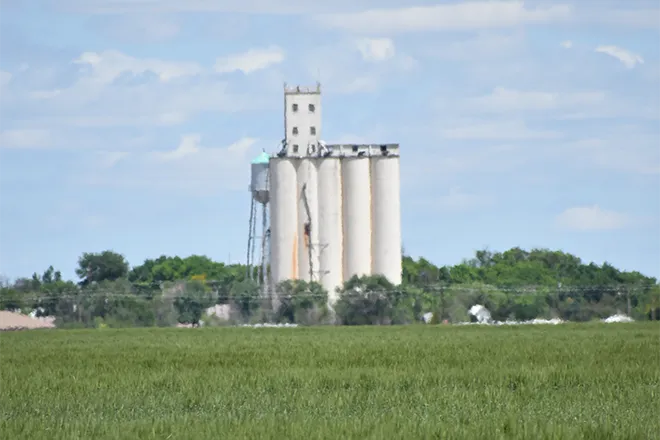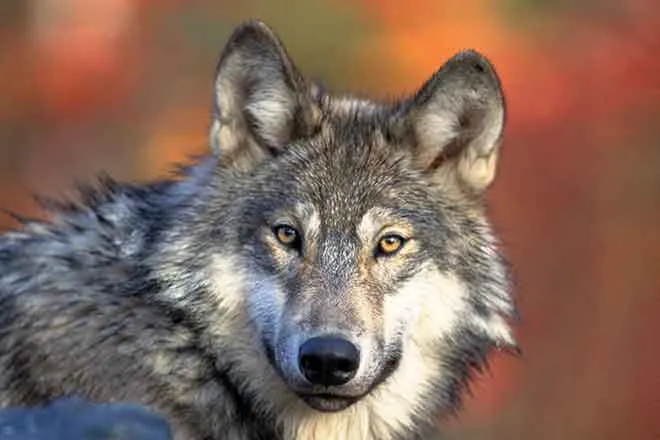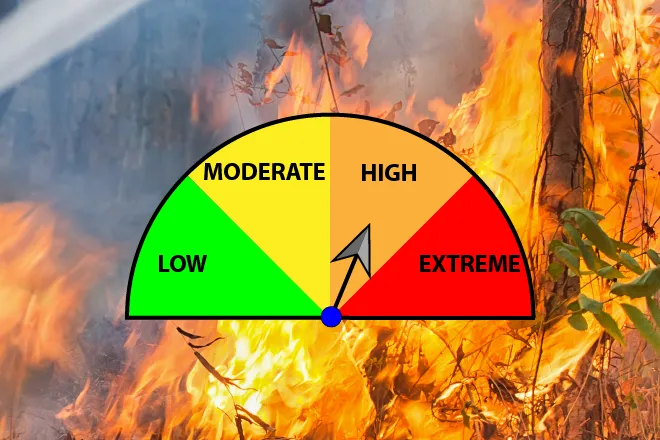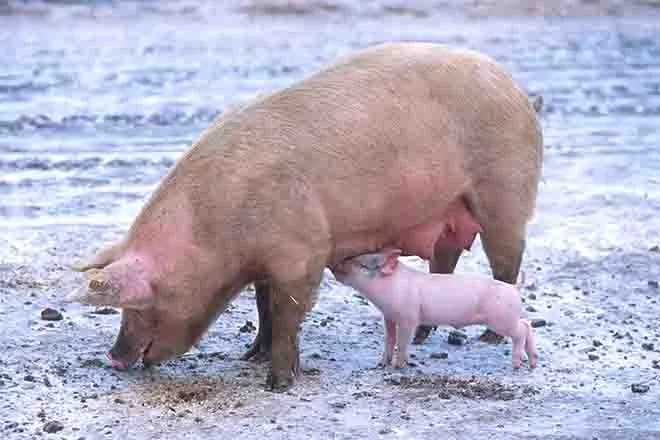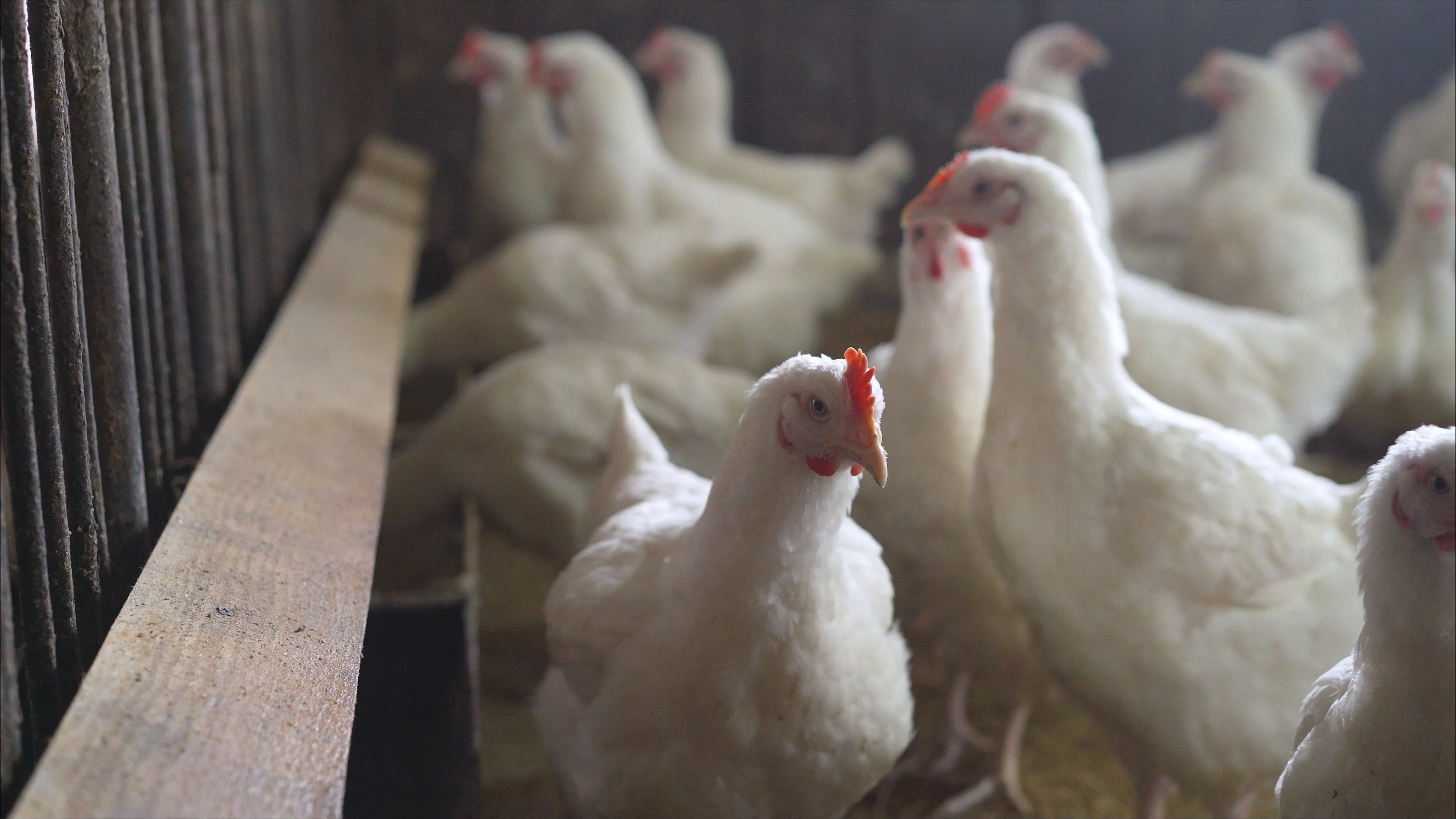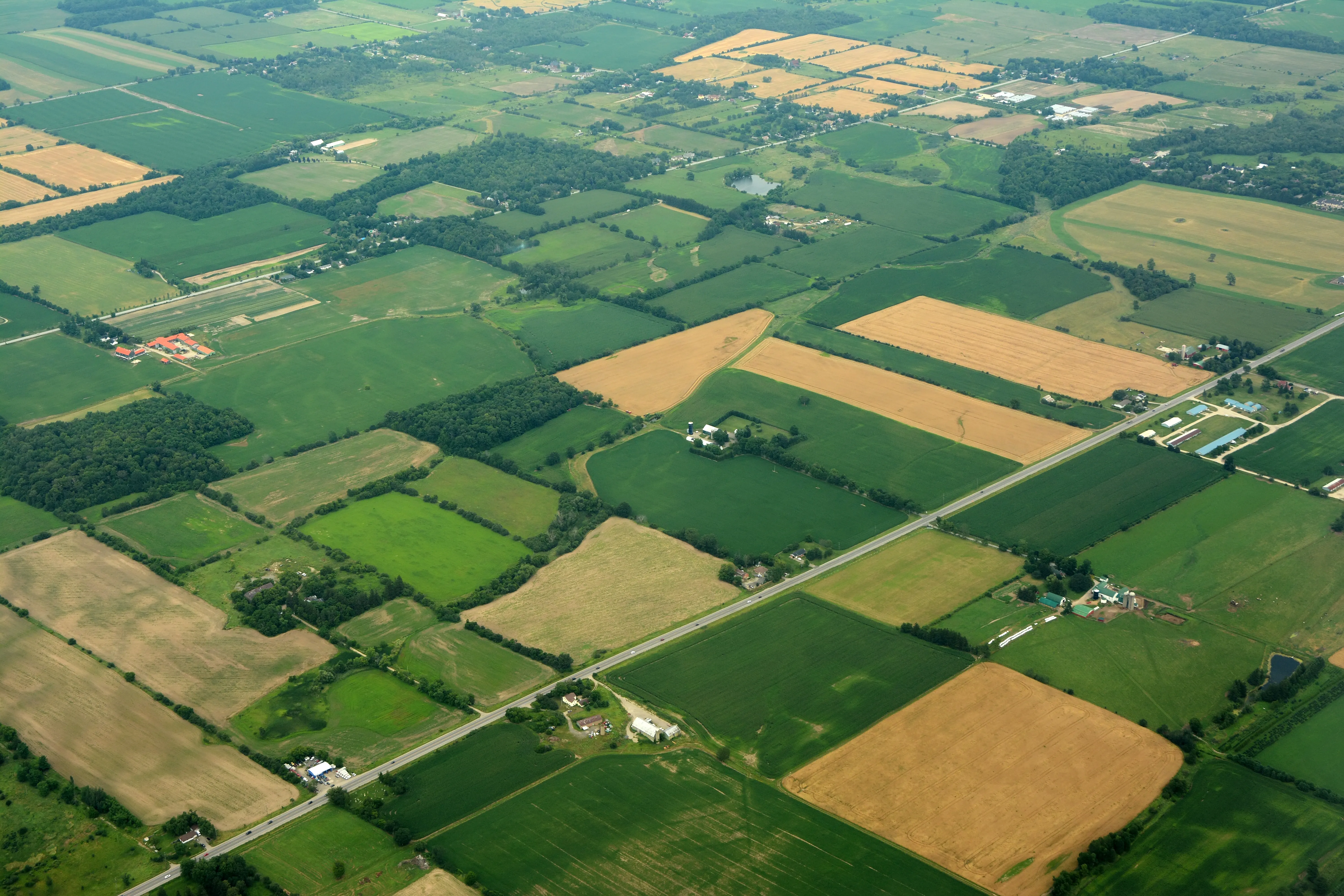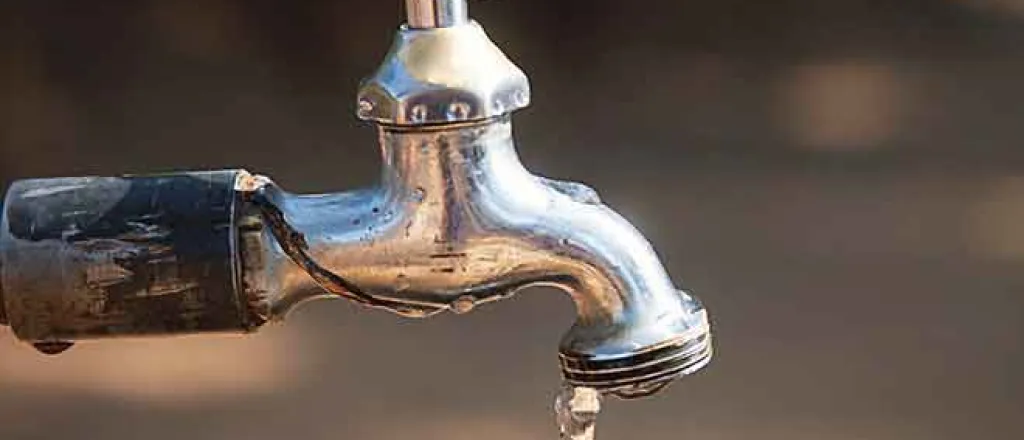
Kansas farmers brace for water cuts to save Ogallala Aquifer
(Oklahoma Voice) An inch or two of corn peeks out of the dirt, just enough to reveal long rows forming over the horizon.
Sprinkler engines roar as they force water from underground to pour life into dusty fields.
Thunder cracks. The wind whips up dirt as a trail of dark storms looms. The crashing hot and cold fronts would probably set off tornado sirens — if there were any in this remote part of the state.
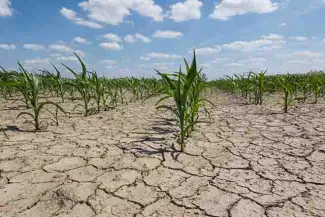
© iStock - Taglass
It’s spring in southwest Kansas, a hub for the nation’s crop, dairy and beef industries.
As the familiar seasonal rhythm plays out, some farmers are bracing for major changes in how they use the long-depleting Ogallala Aquifer. The nation’s largest underground store of fresh water, the Ogallala transformed this arid region into an agricultural powerhouse.
After 50 years of studies, discussions and hand-wringing about the aquifer’s decline, the state is demanding that local groundwater managers finally enforce conservation. But in this region where water is everything, they’ll have to overcome entrenched attitudes and practices that led to decades of overpumping.
“It scares the hell out of me,” farmer Hugh Brownlee said at a recent public meeting in the district on the changes to come.
Last year, Kansas lawmakers passed legislation squarely targeting the Southwest Kansas Groundwater Management District, which spans a dozen counties. Unlike the two other Kansas districts that sit atop the crucial aquifer, this one has done little to enact formal conservation programs that could help prolong the life of the aquifer. The new law aims to force action.
The district has come under fire from legislators increasingly incensed by its substantial travel expenses, its lack of formal conservation policies and its alienation of farmers who are trying to save water. At a hearing in February on a bill meant to help farmers in one county leave the district, a Kansas House member floated the idea of doing away with the organization, also known as Groundwater Management District 3, altogether.
“Maybe that’s something that we need to consider — just dissolve GMD 3 so that these other boards that are doing good work are not affected,” said state Representative Cyndi Howerton, a Republican from Wichita.
District leaders think the criticism is unfair. But even they acknowledge that painful change is brewing. Change that will force farmers to cut back.
Clay Scott, a farmer and rancher who has served on the district’s board for more than two decades, said most local farmers are ready to change. That’s partly because they don’t want to give the state a reason to impose its own restrictions, he said.
Scott said the problem of overuse has been generations in the making and can’t be reversed overnight.
“It’s going to take us time to turn this ship around,” he said.
But critics say the organization has already had plenty of time. Decades.
“My biggest disappointment with GMD 3 is they’ve had 50 years to build a consensus on conservation and they failed to do it,” said Frank Mercurio, who works for a dairy with facilities across southwest Kansas and southeast Colorado.
The discussions here mirror those occurring not just across the eight Ogallala states (Colorado, Kansas, Nebraska, New Mexico, Oklahoma, South Dakota, Texas and Wyoming) but also across the country. The dual threat of climate change and overpumping of groundwater threatens farming and agricultural communities coast to coast.
Outside the town of Syracuse, Kansas, Brownlee runs a small farm with dryland and irrigated fields divided by a curvy two-lane blacktop. More than 200 years ago, Mexican and American traders following the Santa Fe Trail crossed this part of the plains on ox-pulled wagons.
Brownlee, who farms part time and drives a propane truck, said he understands the shrinking water supply. But he thinks the state is to blame — not farmers. Decades ago, Kansas officials issued more water rights than the aquifer can sustain.
The state should fix that, rather than punishing farmers with across-the-board cuts, he said.
“They want to be able to flip the switch and just stop it,” Brownlee said. “That’s not going to do anybody no good.”
‘Should have been done 40 years ago’
In a community center on Main Street in Lakin, Kansas, a few dozen farmers in feed and seed hats last month pulled folding chairs off a big metal rack.
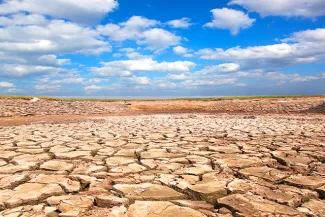
iStock
Just below the stained drop ceiling panels, a tilted projector shone onto a bare beige wall the district’s plans to comply with the new law. The first step: identifying priority areas for its conservation efforts.
An expert from the Kansas Geological Survey pointed to maps of the district. Blood red blots showed where aquifer conditions were most severe. In some parts of the district, the aquifer is already all but gone. Other areas have more than 60 years of water left even if they don’t cut back their usage.
But at this and a series of meetings across southwest Kansas, district leaders outlined plans to declare its entire territory a priority area. Some critics viewed the move as a stall tactic, but district leaders say it leaves all options available to them. The district in 2026 will have to present an action plan, which it says will reflect the huge variations in aquifer conditions.
Kansas’ chief engineer, Earl Lewis, who will evaluate the board’s plan and future conservation efforts, said the board likely can designate the whole region a priority, though he’s not sure it meets “the spirit” of the law.
In the series of meetings, farmers ran through familiar questions, concerns and excuses.
What about the farms pumping the aquifer down in Oklahoma?
What about all the new dairies and feedlots coming in?
What about city drinking water wells?
Crop irrigation accounts for 85 percent of all water use in Kansas — even more in western Kansas.
The group also discussed the possibility of paying growers to shut down their wells.
But one farmer said he can’t farm his sandy soil without irrigation. After the meeting, he declined to be named, saying he could get in big trouble for sharing his real feelings.
Local farmer Steve Sterling interjected at the first meeting in Garden City to say conservation planning “should have been done 40 years ago.” Some of his neighbors abandoned their farm when he was 12, he said. They were out of water.
Katie Durham, who manages Groundwater Management District 1 in western Kansas, drove south to attend some of the meetings in GMD 3. She said she hoped the farmers in attendance understood that change is coming under the new law.
“This is happening,” Durham said. “I just hope that urgency and sense of wanting to be involved and kind of taking ownership of the future on a local level — I just hope people are understanding that.”
‘This is a cultural thing’
Between the 1950s and the 1970s, Kansas created the fundamental problem that allows aquifer depletion by granting farmers the right to pump more water out of the aquifer each year than returns to it via rainfall. But the state has largely left it up to locals to find solutions to the problem.
The state charged the three groundwater management districts over the Ogallala with protecting both the agricultural economy and aquifer water. But their five-decade histories primarily have been marked by further decline of the Ogallala Aquifer. Two districts have made progress in recent years and helped farmers to slow, or even stop, the decline.
GMD 3 is different.
Burke Griggs, a water attorney who previously worked for the state, argues the southwest Kansas district isn’t doing much compared with the other two.
“The law is the same. The regs are basically the same,” he said. “This is a cultural thing.”
He argues the state should take a firmer stance in aquifer management.
“I think it’s time for a reckoning,” Griggs said.
District officials say farmers in GMD 3 have used 13 percent less water in the past 10 years compared with the decade before. But it’s unclear how much of that change is intentional — from conservation — or a reflection of the limited water available in the declining aquifer.
Though its territory is twice the size of the other two districts’ combined, the southwest Kansas district hasn’t accomplished as much. The other districts have offered financial assistance to farmers investing in water-efficient irrigation systems and championed large-scale restrictions on pumping.
GMD 3 has done none of that. Between 2010 and 2022, financial records show, the district spent, on average, only 13 percent of the money it budgeted for conservation. In most years, it didn’t spend anything on conservation.
Mark Rude, who has been the organization’s executive director for nearly two decades, said the district’s entire budget supports water conservation. The district takes in more than $1 million per year and spends 70 percent of that on salaries and benefits, according to financial documents received through a records request. The rest goes largely to office equipment, travel and other administrative costs.
“I mean, ultimately, that’s why we’re here,” Rude said, “and if you look at the $600,000-plus we (spend) on staff, why is the staff here?”
This summer, the district board will consider a 38 percent increase in the fee it imposes on water users, which is expected to raise more than $200,000 each year. Rude said that money would primarily be used to hire two new employees to help with grant projects offering technical assistance to farmers trying to conserve water.
Between 2010 and 2022, GMD 3 spent about four times as much on travel for Rude and staff as on water conservation. On average, the GMD pays more than $20,000 each year for Rude’s travel — plus another $20,000 for the rest of its staff members — compared with $10,000 for water conservation.
Last year, the district changed its financial statements, reporting fewer, broader categories. The new financial structure did not distinguish travel costs from other expenses.
Rude defends the spending by saying it’s necessary to build the partnerships and relationships needed to achieve district goals, including its aim of piping in water from out of state.
“How else do you do it?” Rude said. “Really, please show us: How else do you do it?”
Last year, lawmakers from both sides of the aisle questioned Rude during a committee hearing on why the district wasn’t doing more to conserve groundwater.
State Representative Lindsay Vaughn, an Overland Park Democrat, said during a legislative hearing that the district had 50 years to act but made no progress on addressing aquifer decline.
“The issue is only becoming more urgent,” Vaughn said, “and I am discouraged to see that there aren’t any real efforts right now to get the ball rolling and coming up with a long-term plan.”
The district’s lack of action also has drawn the attention of farmers who mounted a campaign to secede.
In 2022, Hamilton County farmers submitted a petition to withdraw from the groundwater district.
They characterized the organization as a bureaucratic mess with a ballooning budget that spends little on conservation, obstructs programs meant to slow groundwater decline and provides no benefits for dryland farmers who also pay assessments.
The petition criticized groundwater district leaders’ fixation on building an aqueduct across the state. The organization twice has trucked water 400 miles from the Missouri River to western Kansas in an effort to sell the idea.
In their petition, Hamilton County farmers said the project only managed to move and dump water with “no tangible benefit to anyone.”
Richard Geven, owner of the 10,000-head Southwest Plains Dairy, was among those who signed the petition to leave.
Geven, a native of the Netherlands who has been farming here for nearly 20 years, said he sees little reason for the groundwater district. When he has issues with his wells or needs clarity on water rights, he works with state regulators.
But he pays assessments every year to the district.
“We don’t know what the purpose is,” he said. “We think, ‘What are they doing? We don’t need them.’”
‘They will face the same choices’
Across most of the Ogallala states, governments have preferred to encourage voluntary conservation rather than mandating steep cutbacks, said Kevin Wagner, director of the Oklahoma Water Resource Center at Oklahoma State University.
Oklahoma allows farmers to use up to 2 feet of water each year on every acre they own. But usage is not monitored. Farmers report annual estimates of water usage.
And the state has not banned the drilling of new irrigation wells.
Researchers have closely monitored the decline of the aquifer across the Oklahoma Panhandle — it’s dropping about half a foot per year, he said.
But there’s no telling how much individual farmers are using or conserving.
“When I talk to producers in Oklahoma, there’s a lot of feeling that Oklahoma producers are doing just as good at conserving as their neighbors in Texas and in Kansas,” Wagner said. “And honestly there’s no data out there right now.”
Oklahoma state Representative Carl Newton, a Republican, introduced legislation this year that would require irrigators to meter their water use.
The measure passed, but amid steep opposition from agriculture trade groups, Republican Governor Kevin Stitt vetoed it. He called it government overreach and a violation of private property rights.
Newton said he plans to reintroduce the bill, which he described as “a starting point” for conservation efforts.
“You’ve got to find out where your problem is to get an idea of where to go,” he said. “That was my whole goal.”
Kansas started requiring irrigators to install meters and report water usage in the early 1990s.
Formal conservation efforts have been underway in other parts of the region for years.
In Nebraska’s Republican River Basin, groundwater regulators have helped producers install soil moisture probes and more accurate meters that use telemetry to conserve. And Colorado offers a master irrigator course to help farmers grow crops more efficiently.
In Wichita County, Kansas, just beyond the bounds of GMD 3, farmers created a conservation program that launched in 2021. Called a local enhanced management area, farmers committed to cutting water use by at least 25 percent.
Farmer Don Smith said the program provided a chance for locals to act together before the state stepped in.
Smith, his brother and nephews together run Smith Family Farms, which grows corn, wheat and milo against a backdrop of massive wind turbines. Shiny grain bins emblazoned with the family name tower near the office, where a curious Australian shepherd keeps watch, rearing up on hind legs to peer through the door.
The farm is mostly dryland. Its irrigated fields draw upon 38 wells, connected to advanced sprinkler systems that help reduce water use. The farm also has transitioned to no-till methods, which keeps more moisture in the soil.
Smith said the farm shows that growers can save water and still make money. Lower water use does lead to lower yields, he said. But it also makes growing crops less expensive.
Smith knows the groundwater district just to his south has deeper wells and more abundant water. But the declining aquifer eventually will force changes there.
“I guess it’ll be interesting to see if at some point somebody responds before the gun’s to their head,” he said. “They will face the same choices we all north of them have had to face.”
In Wichita County, Smith said, test wells show the changes have slowed or even reversed aquifer decline. But even so, he doesn’t think irrigated farming will last forever. He expects the day will come when pumping small amounts of water won’t be worth the cost.
“We all understand that we are sucking water out of a bathtub,” he said. “And the rate we’re taking it out of the bathtub exceeds the rate Mother Nature can put it back in.”
Oklahoma Voice is part of States Newsroom, a nonprofit news network supported by grants and a coalition of donors as a 501c(3) public charity. Oklahoma Voice maintains editorial independence. Contact Editor Janelle Stecklein for questions: info@oklahomavoice.com. Follow Oklahoma Voice on Facebook and X.

